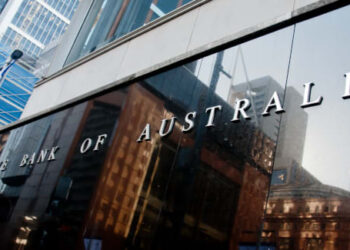With President-elect Donald Trump’s inauguration day not until late January, a chief investment officer believes that a “lame duck” period has kicked in for global markets.
“The initial global market reaction has been to extend the so-called ‘Trump trades’, resulting in a stronger US dollar, higher US yields, and stronger US equities,” Finisterre Capital’s Damien Buchet has said.
But now, according to Buchet, markets may not have much to “grind on”, apart from key nominations and occasional statements from the President-elect.
The CIO noted that even before the post-election rally, the market’s pricing of the outcome had been relatively subdued compared to pre-election expectations.
“That may be explained by hopes for some dilution of the most radical proposals, as well as the fact that the implementation timeline may be eventually more drawn-out,” he said.
One key lesson from Trump’s first presidency, according to Buchet, is that the Republican’s stance on major issues can shift quickly, making “accurate pricing all the more difficult”.
Expounding on the period between now and inauguration day, he believes there’s still a possibility that foreign exchange and interest rate markets could recover from their initial post-election weaknesses.
“An absence of further adverse market reaction into December could lead to some unwinding and short covering into year-end,” he said.
“Ultimately, we will have to position portfolios on likely long-term Trump policies, but the quantum and impetus of these policies may be hard to anticipate before January.”
Winners and losers in emerging markets
Buchet also pointed out that following the election, the market’s bias clearly favoured emerging market (EM) currencies weakening against a strengthening US dollar, with declines ranging from 2.1 per cent for the Chinese yuan to 3 per cent for the Mexican peso.
“These losses, building on the pre-election market turbulence, suggest that further substantial currency depreciation may be limited in the short term,” he said.
“Meanwhile, EM credit spreads have followed the global tightening trend, mostly through passive tightening in the face of US yield increases presenting an opportunity to trim exposure to overpriced or ‘in-focus’ Trump-levered names.”
On the other hand, frontier market debt has seen stable to positive price movements, thanks to continued global demand for credit and higher yields.
And while the chief investment officer (CIO) thinks that EM debt may continue to fare reasonably well on fundamentals, given that many emerging markets don’t find themselves in the first line of fire under a Trump administration, he said that notable exceptions are going to be countries like China and Mexico.
“Amid continued concerns over consumer spending and unfavourable economic conditions in the country, we believe that China will have to continue with additional stimulus measures over the next few months to cushion their own domestic slowdown together with the impact of likely trade tariffs – which they should be among the first to face after inauguration day,” the CIO said.
“We feel that anything short of a more convincing social safety net [which President Xi Jinping is notably against] or a ‘builder of last resort’ initiative for the property sector may not create a lasting impact.”
Buchet added that China could also opt to “weaponise” the yuan to counteract US tariffs, but said this move is unlikely to be used before 20 January.
“We believe markets may still need to price in more yuan weakness in the coming months.”
Looking at EM more broadly, Buchet pointed out that many markets in the region are increasingly reluctant to cut rates in light of the recent strength in the US dollar, and that this is likely to continue given higher US yields and uncertainty over how the Federal Reserve will react to the Trump administration’s economic policies.
“This could constrain EM growth prospects or prompt governments to seek a looser fiscal stance.”
Ultimately, Buchet reiterated that the greatest uncertainty surrounds the timing and scale of policy measures.
“We will not be able to assess the measures until early 2025 but, as always, the worst is never a sure outcome,” he said.
“Markets may switch to a ‘glass half-full’ approach, hoping for dilution and procrastination of the most extreme measures, possibly extending any year-end rally into early January. The actual time of reckoning on ‘Trumponomics’ will have to wait for later in 2025,” he said.







